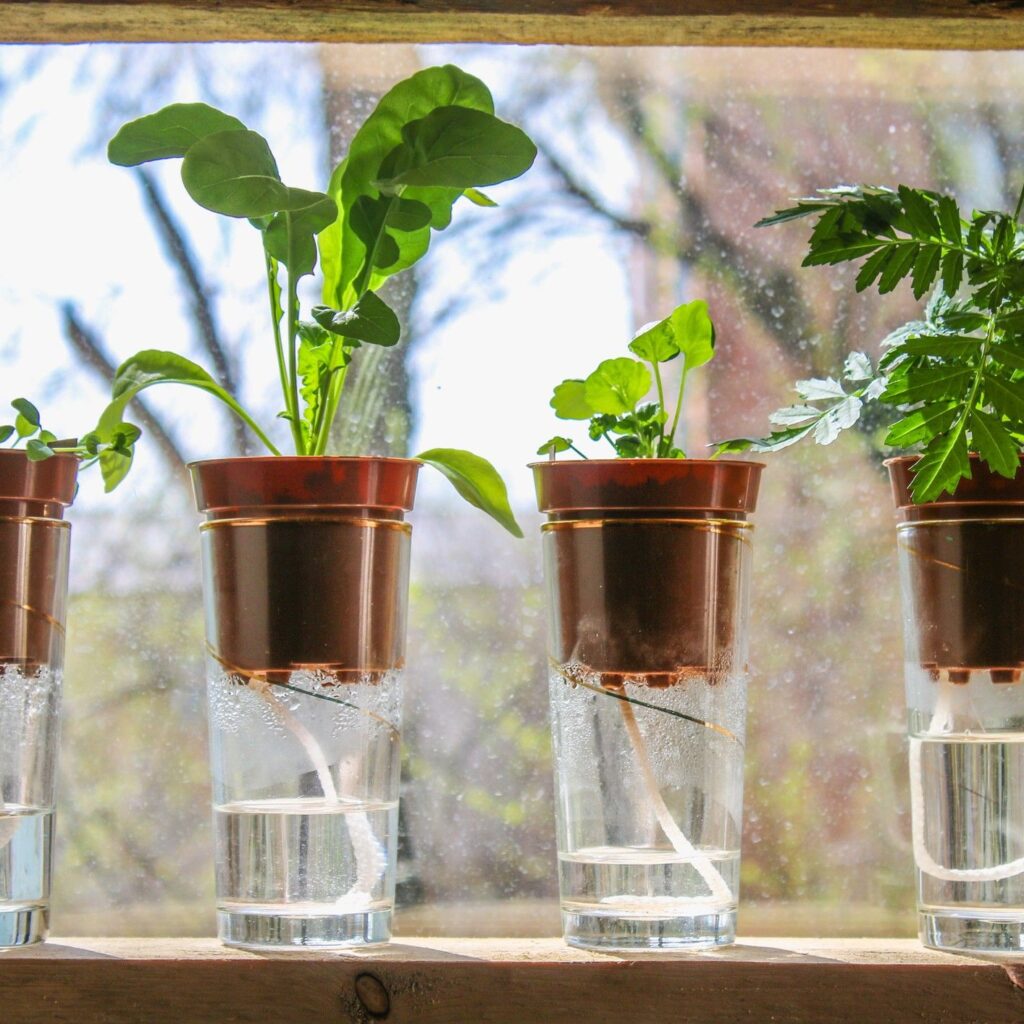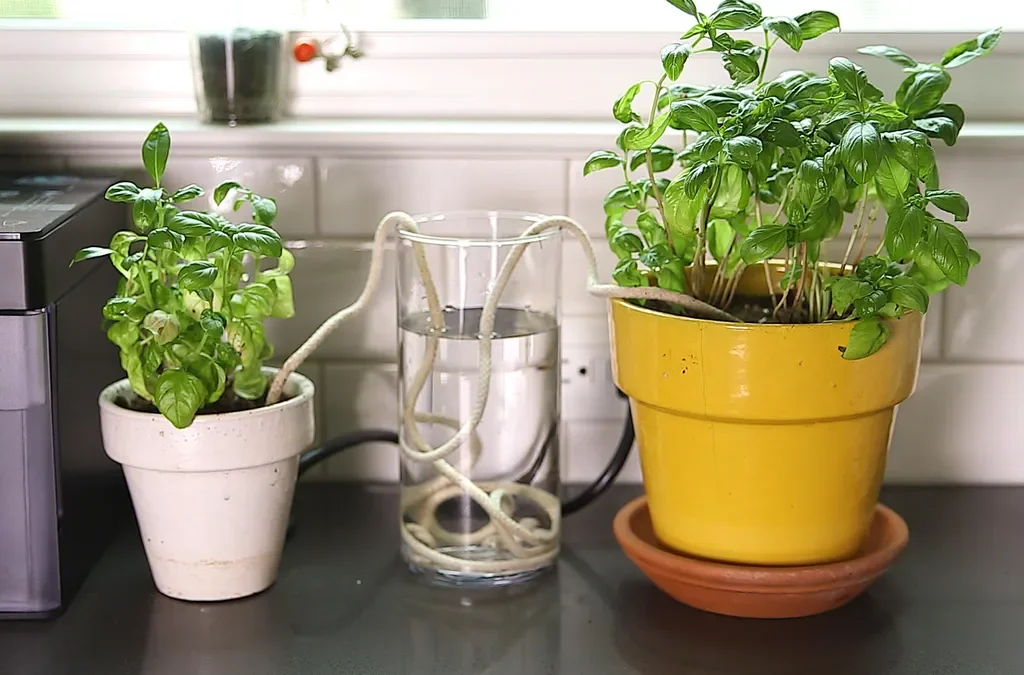Heading out of town for a vacation, work trip, or weekend getaway? One of the biggest worries for plant lovers is, “What will happen to my plants while I’m gone?” The good news is, with a little planning and a few clever tricks, you can keep your green friends healthy and hydrated — even when you’re miles away.
In this detailed guide, we’ll explore natural, easy, and effective methods to water your plants while you’re away — whether you’re gone for a couple of days or a few weeks. From DIY solutions to smart care tips, let’s help you leave home stress-free and return to thriving plants.

Why Is It Important to Prepare Plants Before Leaving?
Plants, like people, need consistent care. When left without water, some plants can wilt, yellow, drop leaves, or die — especially during hot or dry weather. Preparing them properly ensures:
- Healthy, hydrated plants upon your return
- No pests or mold problems from overwatering
- Peace of mind while you travel
Different plants have different needs. Succulents and cacti can go weeks without water, while thirstier tropical houseplants need moisture every few days. The first step is to understand your plant’s water needs.

General Pre-Trip Plant Care Tips
Before setting up your watering solutions, follow these prep steps:
1. Water Thoroughly Before You Leave
A day before your trip, give your plants a deep watering. Allow excess water to drain to avoid root rot.
2. Move Plants Away from Direct Sunlight
Relocate sun-loving plants to indirect light or shaded areas to reduce water evaporation.
3. Group Plants Together
Cluster your plants in one area. This creates a mini greenhouse effect, boosting humidity and slowing moisture loss.
4. Remove Dead Leaves and Flowers
Trim off any dead or dying foliage to reduce plant stress and water demand.
5. Mulch Potted Plants
Add a layer of mulch (like coconut husk, pebbles, or moss) on top of soil to help retain moisture.

Clever Methods to Water Plants While You’re Away
1. DIY Bottle Drip System
A super simple, zero-cost solution using a plastic bottle.
How to use:
- Fill a clean bottle with water.
- Poke a small hole in the cap or remove the cap entirely.
- Invert the bottle into the soil next to your plant.
- Water will slowly release as the soil dries.
Best for: Medium to large potted plants.
2. Self-Watering Globes or Bulbs
These glass or plastic globes gradually release water into the soil.
How to use:
- Fill the globe with water.
- Insert the neck deep into the soil.
Benefits: Attractive and reusable for long weekends or week-long trips.
3. Capillary Matting System
Ideal for multiple small plants.
How to use:
- Lay a water-absorbent mat (or thick towel) on a waterproof surface.
- Place one end in a bucket of water.
- Set plant pots on the mat.
- Water is drawn up through the pot’s drainage holes.
Best for: Herb pots, African violets, or small houseplants.
4. String or Wick Watering Method
A fantastic option for indoor plants in various-sized pots.
How to use:
- Cut a cotton string or wick.
- Place one end deep into the soil.
- Place the other end in a container of water placed higher than the plant pot.
- Water travels down the string into the soil.
Benefits: Easy to set up and cost-effective.
5. Plastic Bag Greenhouse Effect
Turn your plant into a mini terrarium.
How to use:
- Water the plant.
- Cover with a clear plastic bag (ensure it doesn’t touch the leaves).
- Secure the bag around the pot.
- The bag traps humidity, reducing water loss.
Best for: Moisture-loving plants like ferns and peace lilies.
Note: Avoid placing in direct sunlight to prevent overheating.
6. Bathtub or Sink Water Bath
Great for multiple houseplants.
How to use:
- Fill your tub or sink with a few inches of water.
- Lay a towel on the bottom to protect pots.
- Set your potted plants in the water.
- The soil will draw water through the drainage holes as needed.
Duration: Keeps plants watered for about a week.
7. Ask a Plant-Savvy Friend or Neighbor
Sometimes the simplest way is best.
How to plan:
- Create clear watering instructions.
- Group plants together for ease.
- Show them how to test soil moisture.
- Offer a thank-you gift — perhaps one of your plant babies!

Special Care for Outdoor Plants
Outdoor container gardens and flower beds dry out faster than indoor plants.
Tips for outdoor plant care:
- Mulch heavily around the base of plants.
- Water deeply before leaving.
- Move container plants into shaded areas.
- Use bottle drip systems or slow-release watering stakes.
- Install a temporary drip irrigation timer system if you’re away longer.
How Long Can Plants Go Without Water?
| Plant Type | Without Water |
|---|---|
| Cacti & Succulents | 2–4 weeks |
| Snake Plant, ZZ Plant | 2–3 weeks |
| Tropical Houseplants | 7–10 days |
| Herbs | 3–5 days |
| Flowering Plants | 3–7 days |
Note: These durations depend on room temperature, light, humidity, and plant size.
What to Do When You Return
When you get back home:
- Check each plant’s soil for dryness.
- Remove dead leaves and flowers.
- Water thoroughly if the soil is dry.
- Avoid overwatering plants that stayed moist.
- Wipe leaves with a damp cloth to clean off dust and revive foliage.
Bonus Tips: Houseplant Travel Essentials
If you travel often:
- Invest in self-watering planters.
- Use soil moisture meters to monitor dryness levels.
- Set up a smart irrigation system for indoor or outdoor plants.
- Keep a plant care journal noting each plant’s preferred watering schedule.
Final Thoughts
Leaving your plants alone doesn’t have to end in disaster. With a little prep work and some clever watering solutions, your plants will stay happy, hydrated, and ready to welcome you home. Whether you’re off for a long vacation or a quick weekend trip, these natural and effective methods can keep your plants alive and thriving.
Key takeaways:
- Always water and prep plants before leaving.
- Choose the best watering method based on your trip length and plant type.
- Enlist help for extended absences.
- Check in on plant health promptly when you return.
With these tips, you can travel with confidence — knowing your leafy companions will be well cared for.





Leave A Comment